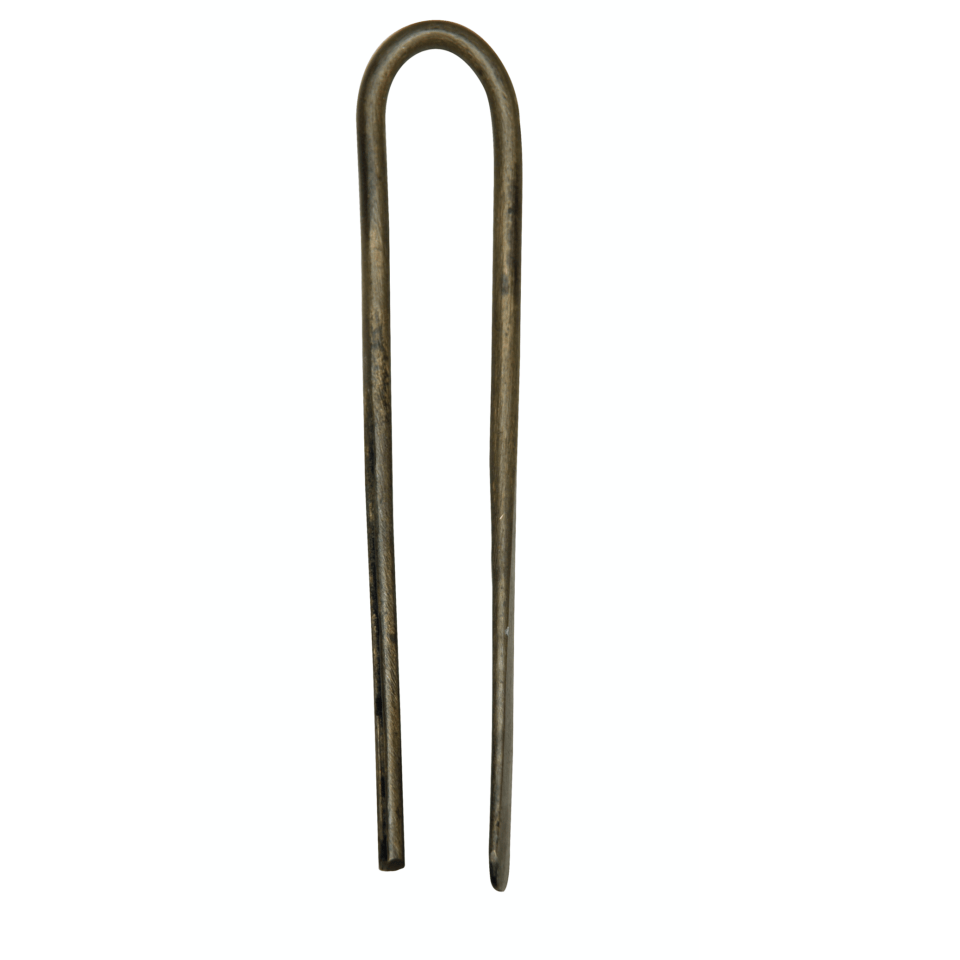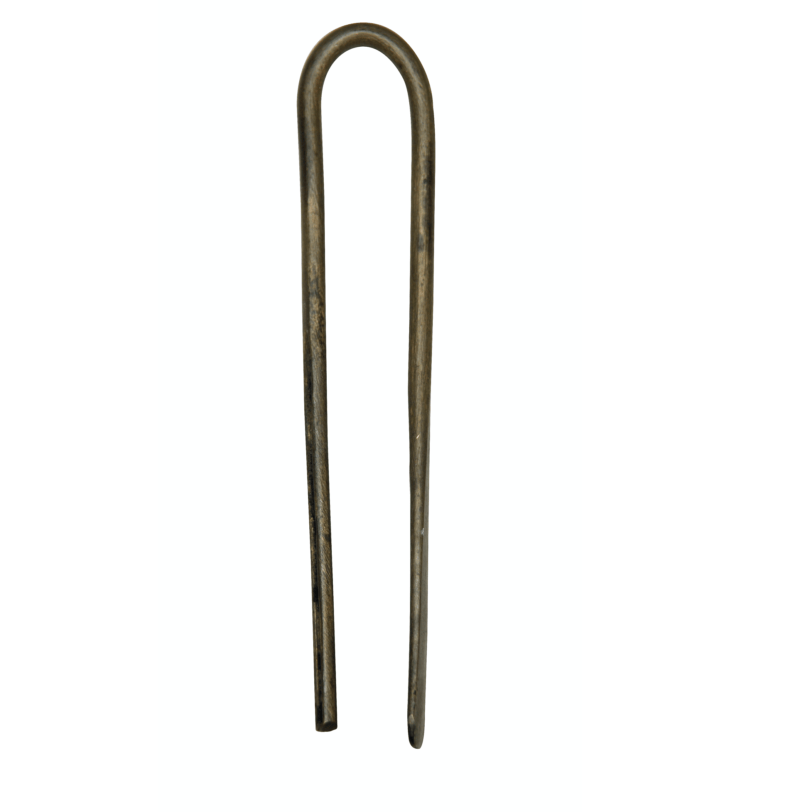About the object
Eighteenth-century hair
This simple metal hairpin looks similar to hairpins used today. But the kind of hairstyles it may have helped to create would be less familiar. Fashions in women’s hair changed dramatically over the eighteenth century. At the start of century, the fontange was all the rage in Britain and France, with hair curled, piled and pinned up on the top of the head. It was 1756 when this hairpin was left as a token. By then, popular hairstyles for women were comparatively simple. Hair was waved, with a twist or braid worn pinned to the back of the head. Hair got bigger again later in the century as extravagantly high styles came into vogue.
For women with little money to spare, keeping up with the latest hairstyles was an inexpensive way of staying fashionable.
Matched by imprint
This token was left with a child called Joseph Millet, renamed Humphrey Joyce by the Hospital, who was admitted to the Hospital in 1756. Humphrey survived to adulthood. At the age of eleven he was apprenticed to a needle-maker. Researchers were able to match Humphrey to his token because the hairpin left an imprint of its distinctive shape on his admission form, or billet.

